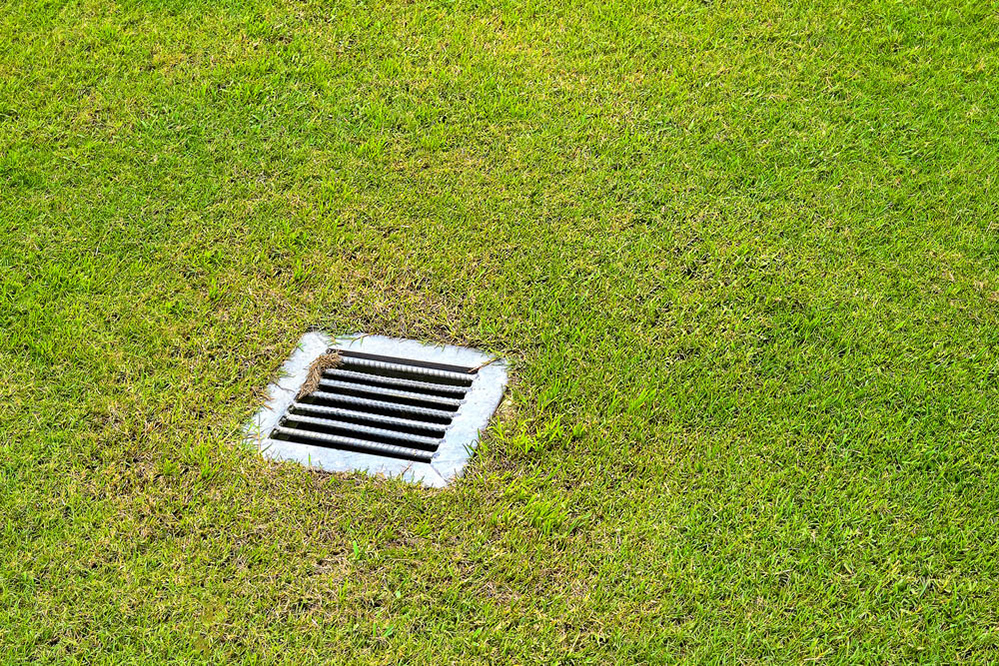
Drainage Installation with a French drain is usually used in your yard, lawn or garden to mitigate drainage problems. In situations where land is at or near the bottom of a slope, these problems often occur. The water then settles (especially in poorly draining soil) and for much of the year can produce a swampy yard that is often unusable. A French drainage system is a simple, time-tested technique that can solve these problems frequently. A French drain is traditionally a plain, partially or completely gravel-filled trench that allows the water to accumulate and run down its slope to a more appropriate area. The more modern interpretation of a French drain involves using either a rigid or corrugated (perforated) drainage pipe to be placed in the trench and then surrounded by gravel and landscape fabric. This will mean that for a longer period of time, the drainage system will be more efficient.
If you have selected a French drain as the right choice for your drainage issues, consider the following tips:
- Choose a place to hold your trench as far away as possible from obstructions.
- Make sure that your drainage water has no negative effects on the adjacent property.
- Make sure that no utility lines or tubes are at risk of being cut in the process before digging. Contact your local utility company and make sure there are any overhead cables for you.
The best results for drainage installation can be achieved by making the trench between 8 and 12 inches wide instead of 6 inches, depending on the volume of water to be spread. A wider trench can store and move a large volume of water more efficiently.
It’s best to have a plan to place your excess soil once the trench has been dug. Since you’re going to replace most of the old soil with piping and gravel, you’re going to have some extra soil to find a home for. Try to locate any low spots that might benefit from a little fill and plan accordingly on the property.
Your drain’s slope should be at least 1 percent, which means 1 foot per 100 feet. Hammering in two stakes at each end of the intended trench is a good technique to ensure you remain with the right pitch. Connect and pull a cord between the stakes. Hang on the string a line rate and change to the stage. First, determine the amount of fall from one end to the other and lower the string by the number of inches that is necessary. The slope you need will now be duplicated by your set. Just use the string as a reference as you go and dig below the string a good length.

Line the bottom with landscape fabric when your trench has been dug. Lay open the fabric so that the surplus runs up to the top on both sides of the trench. Make sure it’s the sort that allows water to pass through. Using a fabric surface will extend the drain’s active life by helping to prevent the process from being blocked by roots and silt.
Until laying the drainage pipe, put a minimum of 2 inches of gravel in the trench. Getting the perforated holes in the pipe facing down is critical. Then cover the tube with gravel, leaving at least 2 inches of gravel over the pipe, so that it is completely surrounded.
To enclose the tube in gravel and shield it from silt and roots, fold the excess fabric over.
Covering the enclosed drain with either more gravel (up the ground level) or simply adding a layer of gravel, followed by sand and topsoil, is acceptable.
It is possible to dig by hand, using only shovels, depending on the size of the trench you will need to dig, as well as the type of soil you will be dealing with. It’s surprising how quickly the trench can be dug with the aid of a few mates. Some ways to dig are to lease a trenching tool and hire someone with a backhoe to dig the trench. Feel free to ask experts like Tyler Sprinkler for the tools, drainage supplies and advice you need.